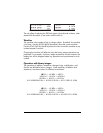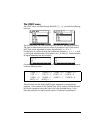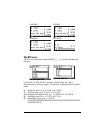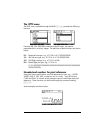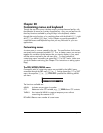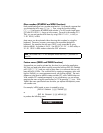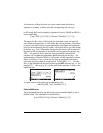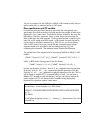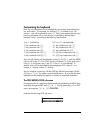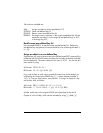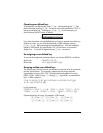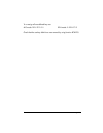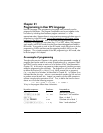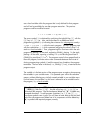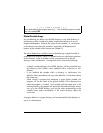
Page 20-5
Customizing the keyboard
Each key in the keyboard can be identified by two numbers representing their
row and column. For example, the VAR key (J) is located in row 3 of
column 1, and will be referred to as key 31. Now, since each key has up to ten
functions associated with it, each function is specified by decimal digits
between 0 and 1, according to the following specifications:
.0 or 1, unshifted key 0.01 or 0.11, not applicable
.2, key combined with „ .21, key simultaneous with „
.3, key combined with ‚ .31, key simultaneous with ‚
.4, key combined with ~ .41, key combined with ~
.5, key combined with ~„ .51, ~ key simultaneous with „
.6, key combined with ~‚ .61, ~ key simultaneous with ‚
Thus, the VAR function will be referred to as key 31.0 or 31.1, while the UPDIR
function will be key 31.2, the COPY function will be key 31.3, the upper-case J
is key 31.4, and lower case j is key 31.5. (Key 31.6 is not defined). In
general, a key will be described by the arrangement XY.Z, where X = row
number, Y = column number, Z = shifting.
We can combine a given key with the USER key (left-shift associated with the
~ key, or „Ì) to create a customized key action. In principle, the entire
keyboard can be re-defined to perform a number of customized operations.
The PRG/MODES/KEYS sub-menu
Commands useful in customizing the keyboard are provided by the KEYS menu
accessible through the PRG menu („°). Setting system flag 117 to SOFT
menu, the sequence „ °L @)MODES @)KEYS
produces the following KEYS soft menu:



